Urmila’s world: children with cerebral palsy
Nitin Cerebral Palsy Society at Nayabasti (about 5km from Mitrapark, Chabahil) has since 2014 been providing a homely environment for special-needs children. It is an initiative of Urmila Maharjan in memory of her son Nitin, who suffered from severe cerebral palsy and died young at 14. Maharjan, now 55, had worked as a special education teacher for 25 years at ‘Mastiska Pakshyaghat Swawalamban Samuha’ during which time she also trained at the Greenmead Special School London.
Cerebral palsy is a collective name for a number of permanent movement disorders caused by brain damage in early childhood. The Nitin CP Society opened with seven children but is now providing care for 16 of them, who suffer either from cerebral palsy or mild autism. Since its establishment, the school has been a second home to 36 children, and the 16 children currently there are between four and 19. “They remind me of my son. I would like to be devoted to their care for the rest of my life,” says Maharjan.
Tough but rewarding
It’s not easy to take care of children affected by cerebral palsy. They are usually stubborn and angry, and some families consider them a nuisance. But they have to be treated with more affection than children with other mental disabilities. It is particularly challenging taking care of teenage girls during their monthly periods.
The school has a checklist to keep record of each child’s behavior and ailments. When a new child is admitted, a six-month plan is drafted to cater to his or her needs. The goal is to make children able to complete basic tasks on their own and maximize their physical and mental well-being. Those above 14 are also involved in various vocabulary-building activities. The school also provides them with transport services and two meals a day.
Maharjan says she does not want these children to be a burden on their parents and a hindrance to their career paths. Taking care of their children throughout the day, she adds, frees up time for parents to focus on their work or to attend to other matters.
She gives the example of a seven-year-old who has shown remarkable improvement. He was three when he was admitted to the school and could not even crawl. But now he walks independently, interacts with people, solves jigsaw puzzles, plays computer games, and is even making progress interpreting numbers.
Fund crunch
Lack of adequate resources means the organization can afford only four staff members, each working for a nominal salary. They are responsible for the entirety of the children’s activities—from feeding them to taking care of their hygiene and sanitation. The school also has a professional physiotherapist.
The school collects a token fee from the parents, which they give willingly. (The highest amount it gets is Rs 7,000 a month a child.) The parents of three children do not pay, given their poor financial status. As the amount the school raises every month varies, it is difficult to plan ahead. Maharjan says many big organizations and renowned personalities have made promises to visit the school and contribute financially, but little of the promise has materialized thus far.
The school pays a monthly rent of Rs 35,000 and Rs 45,000 for transport services. It is struggling to meet these expenses and may have to shut down if it continues to fail to secure steady income.
Nitin Cerebral Palsy Society is not a huge organization providing service to hundreds of clients. It is a small but noble initiative—one that requires tremendous dedication. Surely, endeavors like these deserve our support.
If you would like to donate, contact the society at [email protected] or call them at +977 9861098189
Catering to your plus plus-size needs
You stop feeling good about the way you look as your outfit doesn’t fit perfectly. It’s loose in the bust, and a bit too tight in chest and shoulders. This problem is further complicated for women in their maternity period. The right size of cloth can make a pregnant woman look smart and elegant whereas a slight misfit can make you grumpy all day. With plus-sized influencers and celebrities flaunting their baby bumps in custom-made dresses, the general public wants to experiment too. But where do you get these chic maternity clothes? This week we profile five plus-size and maternity wear outlets in Kathmandu valley featuring western, formal as well as traditional wears, and both online and offline.
DS Collections
The DS CollectionS has won many hearts with its trendy wears and quality fabrics. With increasing customer demand, the store now has the plus-size collection for all the curvaceous ladies out there. Although it has outlets all over the valley, the plus-size collections are exclusive to the Durbarmarg branch. The sizes extend up to XXXL and are usually launched on Fridays. “Our customer response has been positive since the start and our clothes are sold out as soon as they are launched,” says one of their employees. The products are mostly imported from the US, and also from Thailand. New collections are launched either on weekly or monthly basis, depending on customer demand.
Womaniya
With their outlets at the United World Trade Center and The City Center, Womaniya is the perfect place to find plus-size clothing. After only four years of its establishment, the store has gained a name for itself among the customers who otherwise had a difficult time finding their ‘perfect fit’ due to body issues. The bust sizes at Womania vary between 42 and 45. The store is known for its varieties of lingerie as well as western outfits. It claims to have only branded labels from Thailand and India. Womaniya is one of the few clothing stores dedicated entirely to plus-size outfits in the valley.
Osho Fashion House
A store of high quality handmade fabrics, the Osho Fashion House at Lazimpat is an ideal stop for all “mommies-to-be”. Pregnant women have problem dressing up as they have to wear larger sizes than their bodies, just for the sake of their bump. In such cases the sleeves bulge and the outfit loses its charm. The store claims to have an unmatched collection, with a vast range of fits, to take care of all these complaints. “Our store offers a variety of dresses to fit your body perfectly while giving you extra style and comfort,” says Rabin Singh Thapa, the store owner. It also specializes on other handmade outfits for non-maternity purposes.
Classic Curves
Classic Curves is an online store devoted entirely to enhancing the curves of all plus-size ladies with its collections of casuals, formals and bodysuits. “We guarantee the quality of our products to be exactly the same as provided on our site. We’ve never gotten a complaint regarding the fabric of the outfit or its false representation,” says Anup Dangol, the store owner. Catering to those between 46- and 60- size in the bust, the store has something for all plus-size customers. With the good response it has received, it is set to open a retail store in the near future. Visit: https://www.facebook.com/curveyqueens/
Maternity Clothing Nepal
One of the oldest maternity-dedicated clothing stores in the valley, Maternity Clothing Nepal caters exclusively to pre-delivery woman. Established in 2012 by Sunita Kawan, the store is located at Sinamangal, just opposite the Kathmandu Medical College. With the number of maternity clothing stores rising, “the competition of late has been so tough that everyone has to be very careful about the quality of their products,” says Kawan. She adds how her no-compromise-on-quality policy has allowed the store to develop a dedicated client base and expand the business. The store claims to import fabrics exclusively from the US but is now looking for manufacturers in Asia to start its own wholesale production. The products of Maternity Clothing Nepal are also available online at daraz.com, Facebook and Instagram.
A fragrant blend of passion and purpose
On the right of the Krishna Pauroti Chowk (toward Putalisadak) is a flower shop that has been turning my head for a long time, every time I am in the vicinity. Maybe it’s the greenish eco-friendly outlook or the name of the shop, Women in Floriculture. Something about it never failed to draw my attention. But I did not know much about the flower shop or how it was making an impact on women’s lives. This week I decided to find out.
Established in 1996 by a group of four women, Women in Floriculture is a small scale enterprise that claims to empower women. As it sells a large quantity of flowers, it makes enough to pay a decent salary to its half dozen female employees who are working there right now. Its goal is not just to turn a profit but also to affect women’s lives positively.
Sabnam Shrestha is one of the four founding members. “The primary goal behind opening the shop was to give jobs to women. We employ men on a contract basis for some tasks—decorations during certain events, for example—but my regular staff are all women. Also, the flowers we buy are also mostly produced by women,” says Shrestha.
She claims the shop is much more than a commercial venture. “The staff come here every day to learn something new, not just to earn money,” says Shrestha. Many of the former employees of the shop have been successfully running their own stores and have established themselves in the flower business. Some of them are looking after similar businesses abroad and making decent money.
Women in Floriculture has been a formidable name in the flower business for more than 25 years. The shop is a perfect illustration of how a small effort with a social purpose can make a big difference
Are you up for intermittent fasting?
We complain about the size of our waist, the fat in our belly, about feeling lousy and sleepy the entire afternoon while simultaneously munching on a packet of chips or chocolates. “I cannot diet but I want to lose weight” has become a familiar refrain. Our hectic lifestyle leaves us with little time for thinking carefully about the food we eat and its nutritional value. But the problem is that one cannot have a good physique while binge eating at the same time. Regular exercise, yoga, meditation, and a sensible eating habit contribute to a good figure and health.
For those who cannot stick to various diets (Keto, low-carb, vegan and what not), intermittent fasting could be an ideal way to lose weight and get the body you want. It isn’t very complex, and can easily fit into your work schedule.
Healthline.com defines intermittent fasting as “an eating pattern where you cycle between periods of eating and fasting. It does not say anything about which foods to eat, but rather when you should eat them.” It is a dietary method that is widely practiced in the western world and has recently started gaining recognition in Nepal. Four individuals who have tried it shared their views on the entire process and their journey to weight loss.
Age an important factor
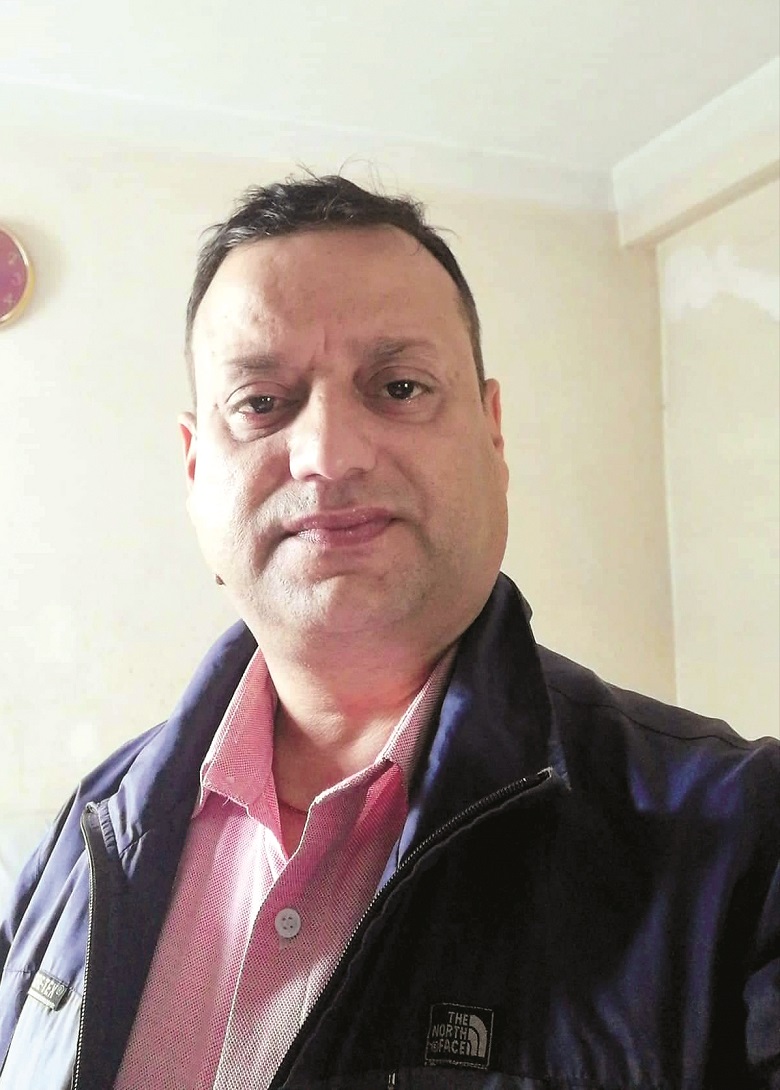
Suraj Subedi, 43 years, Managing Director at Samriddhi Trading Enterprises
The first thing that came to my mind when I realized my bulging tummy did not let me wear my old clothes was that I needed to start dieting. But being a Nepali and having little self-control over spicy and tangy food, I couldn’t keep up with any other diet routine and decided on intermittent fasting. I practiced it for about two months during which I also jogged daily. But the results were a bit disappointing. I’m not going to lie—that may be due to my inconsistency and some days when I cheated.
But then I also think age was an important factor. Had I done it in my early 20s, I think the results would have been much better. My 10 am to 6 pm eating schedule did help me lose some 3-4 kg in three months, but I wasn’t satisfied enough to carry on with it.
Recommend it to everyone
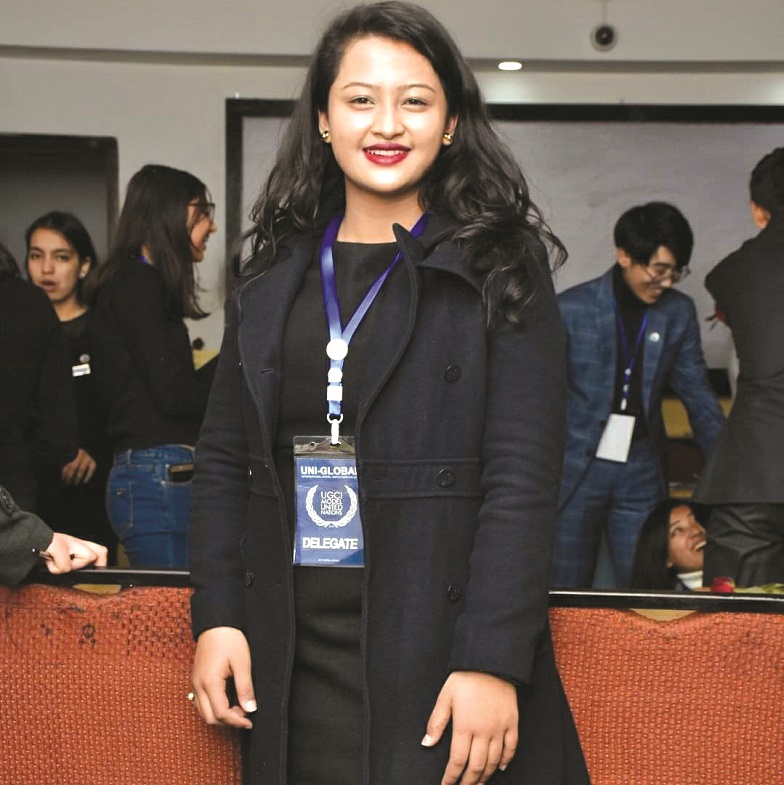
Spriti Shakya, 19 years, Student
I have been following intermittent fasting for about two months now. My routine is simple; I eat between 10 am to 6 pm. I’ve lost about six kg and I’m quite happy with the result. Since it has worked for me, I’d recommend it to everyone. It limits people’s calorie consumption and helps them build a healthy eating habit. It’s not very difficult to adopt, with just a slight change of an hour or two in the regular Nepali meal routine. I plan to continue with it for better results.
Inconvenient and inflexible

Sakshyam KC, 17 years, Student
I practiced intermittent fasting for about six months. I was extremely fat. No, I wouldn’t call it healthy. I thought it was high time I did something about it. That’s when I started my intermittent diet. I would take a cup of black coffee without sugar at six in the morning and then eat lunch at 1. That was my only calorie intake for the entire day. I did lose 25 kg, but the weakness and dizziness I felt are a different story. I wouldn’t recommend this schedule to anyone because it’s inconvenient and inflexible.
Not up to expectation
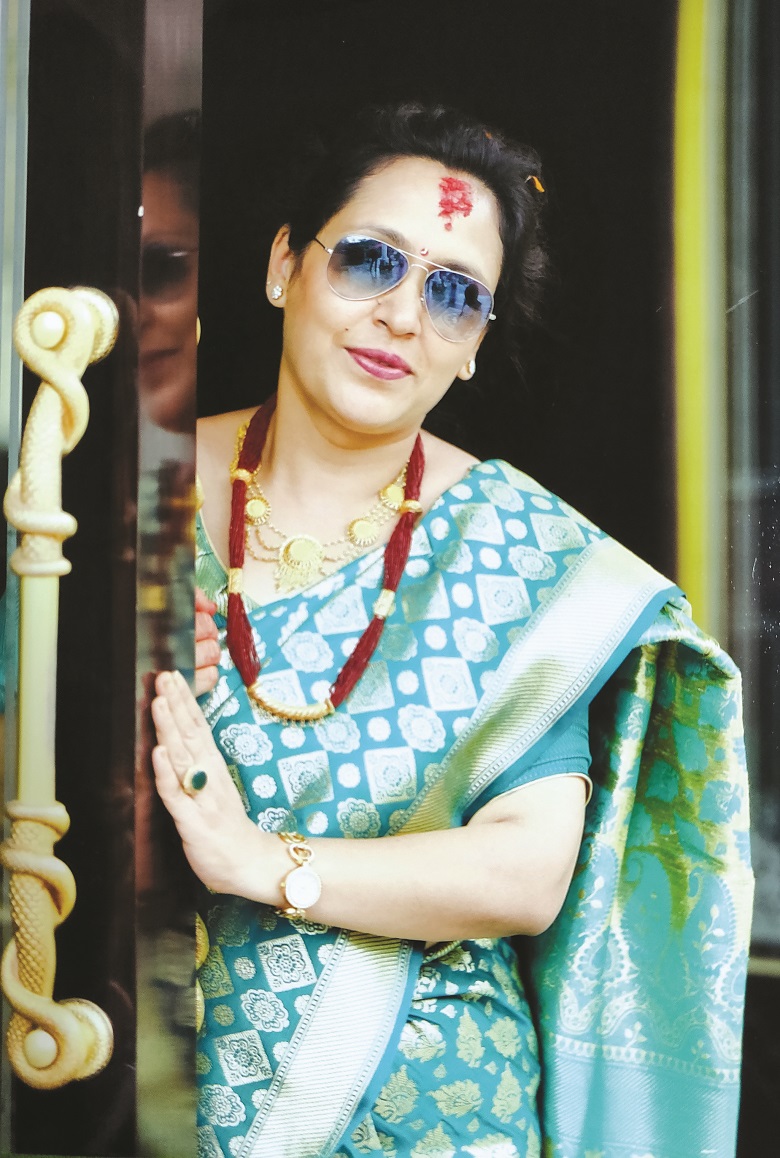
Jyoti Shrestha Manandhar, 45 years, Freelance interior designer
My husband and I started intermittent fasting together, but the results were different. Maybe I did not stick to it as firmly as he did. My eating schedule was limited to an eight-hour window during a single day. The results weren’t quite up to my expectations but I did lose some 4 to 5 kg in three months. My husband lost as many kilograms in just one month. It was not very difficult for me as I did not have to make too many changes in my eating habit, but other practitioners might find it harder. Yes intermittent fasting can be an effective way to reduce weight, although it might take quite a long time.
These conversations with people of different ages and sexes raise as many questions about the effectiveness of intermittent fasting as they answer. In order to help me understand it better, I talked to Dr Binita Panta, a certified nutritionist and a dietitian who works at Alka Hospital in Lalitpur.
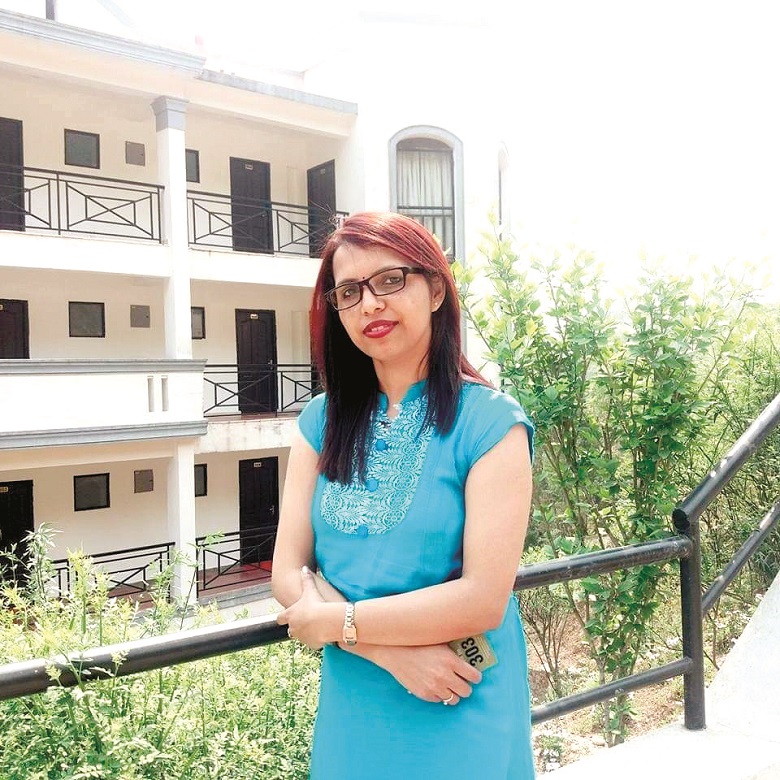
Dr Binita Panta, Nutritionist and a dietitian, Alka Hospital
“I’ve read a couple of articles on intermittent fasting and tried to write one myself. I wanted to base my observation on at least 10 to 15 participants, but the number of Nepali patients willing to try it is minimal. I could only convince one patient to try intermittent fasting, but even he left it mid-way because it was inconvenient for him,” she said.
Dr Panta added that the patient was successful in reducing his blood sugar level without the use of additional medication. But the patient complained that he felt weak during some hours, which the doctor thinks could be psychological.
Dr Panta stressed that in spite of some benefits that intermittent fasting offers, regular exercise and a balanced diet are the key to healthy metabolism and weight maintenance. “I used to run a slimming center and we encouraged members to eat a healthy diet. They got all the nutrients they needed from 1,400 calories a day and did an hour of Zumba dance. This method yielded excellent results, with some people losing up to 10kg in a month.”
According to the doctor, differences in the results of intermittent fasting are accounted for by people’s age and metabolism. People with diseases like diabetes, Polycystic Ovarian Syndrome and hypothyroidism already have low metabolism. Hence it’s very difficult for them to burn body fat and convert it into carbohydrates. In such cases, practicing intermittent fasting can lead to further complications in metabolism, leading to hyperglycemia. As such, these types of fasting are only beneficial to young people without medical issues. So before you begin a new diet regime such as intermittent fasting, you might want to consult a physician or a dietitian. Happy eating!
Basantapur Revisited: The iconic joints of the historic square
Let’s rewind the reels to the time when Basantapur stuffed your lungs with the smell of marijuana, freshly smoked cigars, mixed odor of foreign perfume and, oh, the strings of guitars playing the Beatles’ tunes. That era of Basantapur, when Jhochen was re-christened Freak Street, and there was no Thamel to compete against.Times have changed but Basantapur retains some of its old charm. You still hear the guitar chords, if more John Mayer this time, but youths continue to revive what the 60s’ tourist hub left behind. They try to do so by visiting these (moderately) old and famous cafes and restaurants of Basantapur.
Grasshopper Café
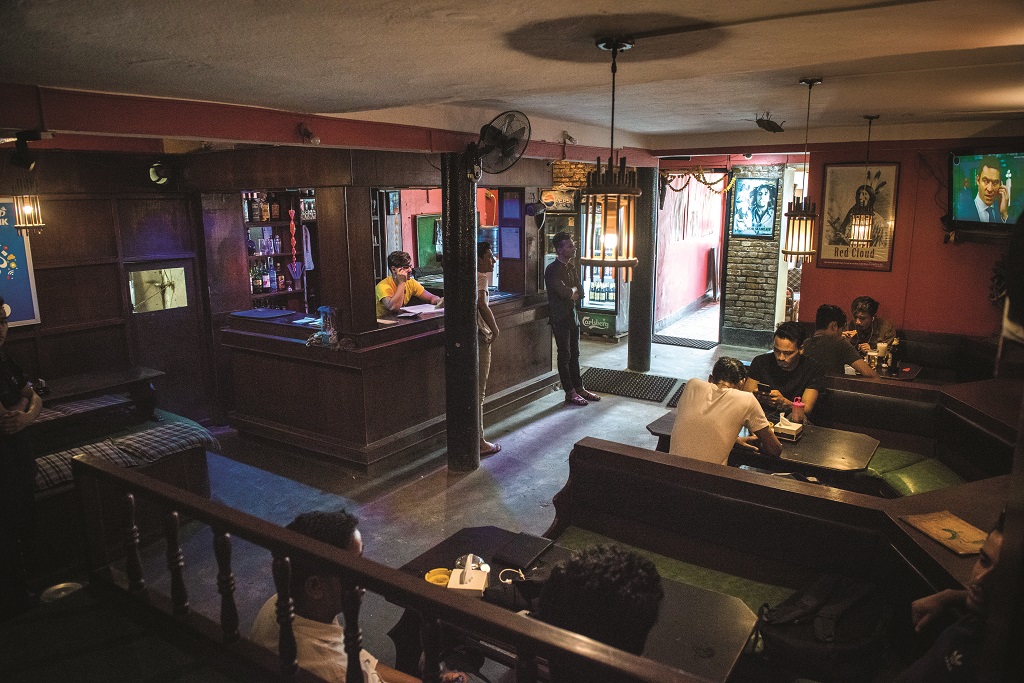
Located at the heart of the Basantapur Durbar Square, Grasshopper Café has been an established name for almost 20 years now. Established in 1999 by Kailash Shrestha, it is a well-known hub for get-togethers among both Nepali and foreign customers. “We’ve had customers from many countries in the past but the number has gone down of late,” says Sabin Thapa, a cashier at the café. (Blame the 2015 earthquake.) Pork chops, lasagna, and the sizzling momo are recommended.
Chameleon Diner
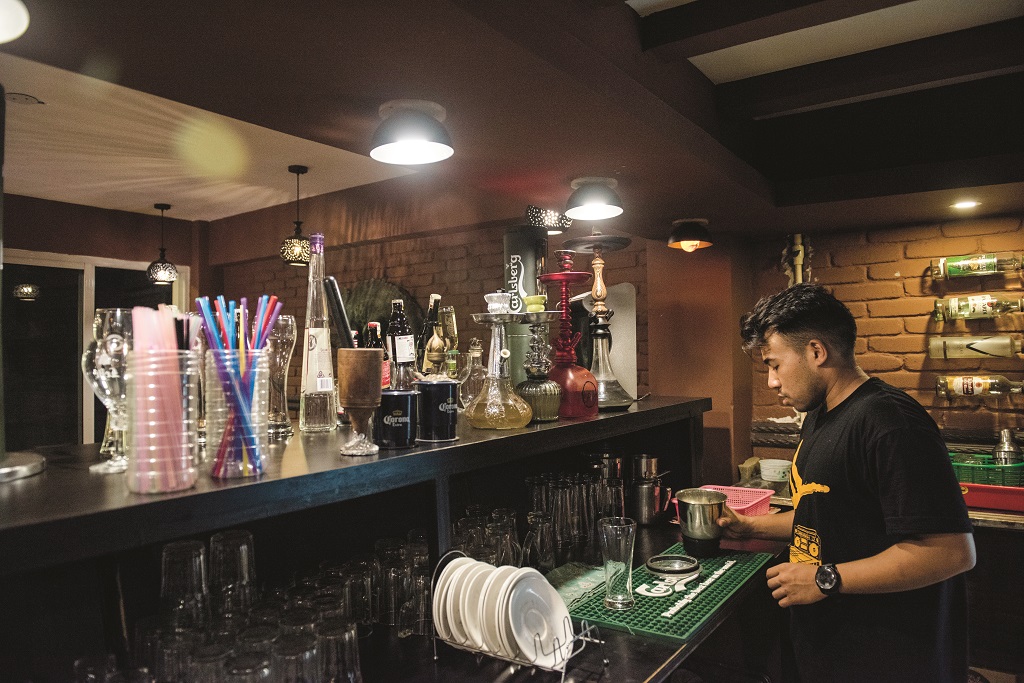
Established in 2008 by a group of enthusiast entrepreneurs as “Razzle Dazzle” (which changed into Chameleon Diner after the split between the partners), the diner is located on Basantapur’s Freak Street. Aditya Suwal, the second generation owner of the diner, has recently renovated it. “We used to have good customers, but then we started getting troubled by the ‘dons’ of Kathmandu. That’s when we thought of recreating a homely environment to get our good customers back,” says Suwal. The diner has now shifted to a new building and serves a great variety of imported beers and cuisines. With live music and bed & breakfast services to be included soon, Chameleon Diner is fully oriented towards customer satisfaction. Don’t forget to try the spicy pork, and the four-way pizza with bursting flavors.
Jessy Penny
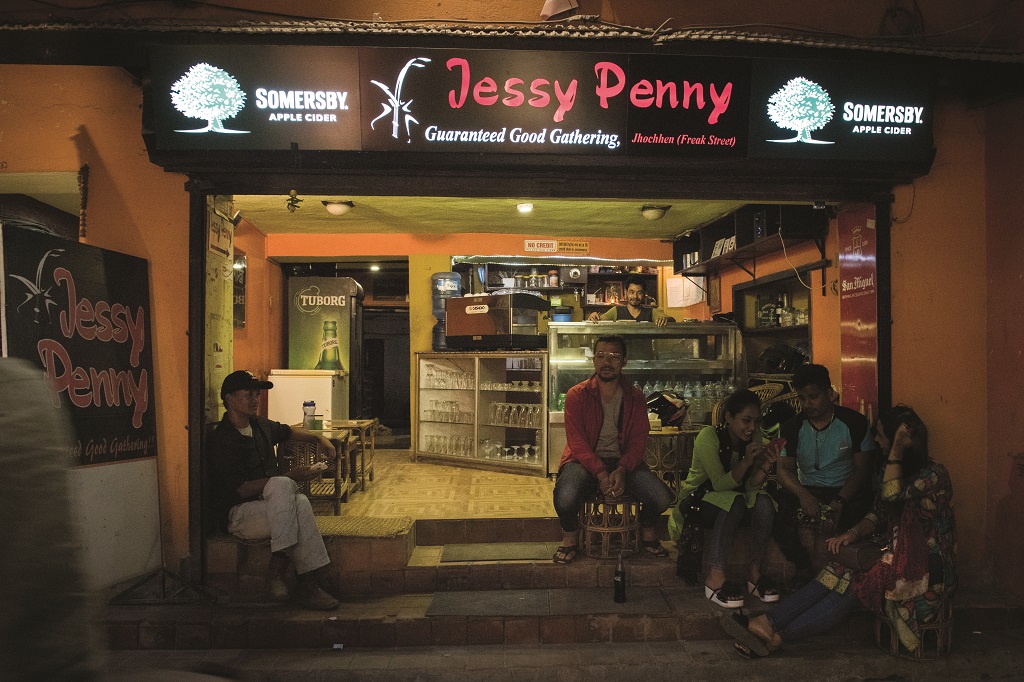
Anyone who’s been to Basantapur frequently has probably come across this place at least once. With almost 70 percent of the total customers being teenagers, Jessy Penny has crafted a place in the hearts of many. Established almost 14 years ago by Rajendra Bhakta Shrestha, this restro used to see many foreign visitors before the earthquake. New visitors are nearly not as many. While having a little chat with us, Sanobabu Maharjan—who’s been assisting his brother Rajendra in the business for the past eight years—mentioned the subtle difference between the customers then and now. “Back then, they would ask us about the type of hukkah we had, but now the first thing they ask of us is the Wi-Fi pass-word,” says Maharjan. The restau-rant has rooms categorized into King Size, Medium and Normal sizes. A new branch is planned in Mehpi, Kathmandu. A little pro tip: Do not forget a cocktail from the rich variety on offer.
Snowman Café
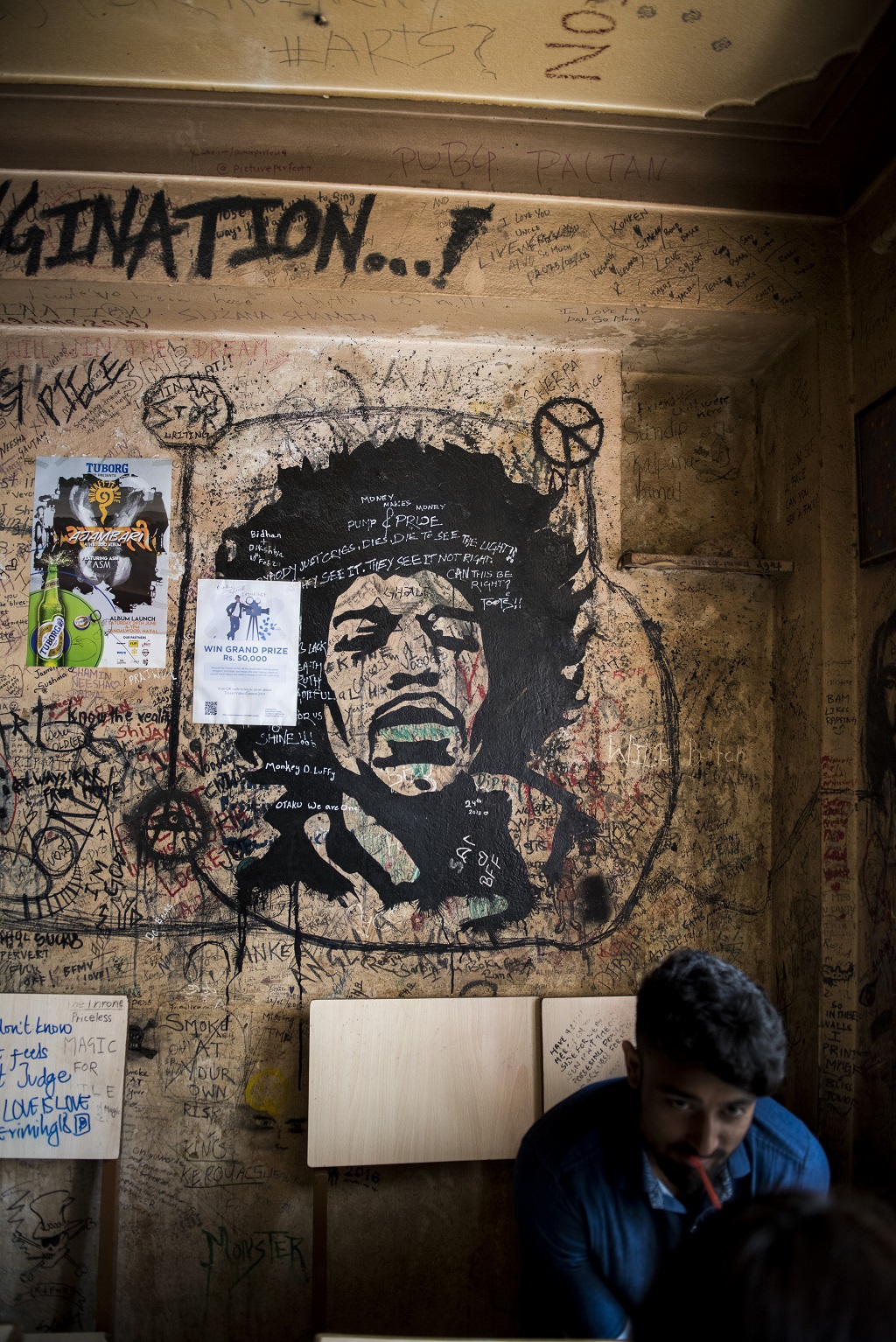
Anyone with a sweet tooth and sugar craving must not forget this amazing cake shop at Freak Street. Established in 1965 by Ram Prasad Manandhar, Snowman Café is a renowned name in the bakery busi-ness, with the same hype maintained over all these years. With no renova-tions since the beginning, the tung-sten lights, the smell of smoke, the worn out paintings of Bob Marley, and the old wooden chairs and tables take you on a time travel to the early 80s. Affordable and mouth-watering delicacies make the café a favorite of many, myself included. Continuing on his father’s foot-steps, Raju Manandhar currently looks after the business and has no plans to renovate it due to the café’s uncertain life. “Our children are not interested in the business; all of them have settled abroad. I have no idea what will happen to the café after me,” says Manandhar. Now, that is SAD for a place whose delicious crème caramel and chocolate love cakes have been included in many famous guide-books. Manandhar says with a smile on his face that celebrities like Janis Joplin and Cat Stevens have visited Snowman. The café is still filled with foreign and Nepali customers and business remains unaffected post-earthquake. Do try different types of cakes; none will disappoint.
Kumari Café
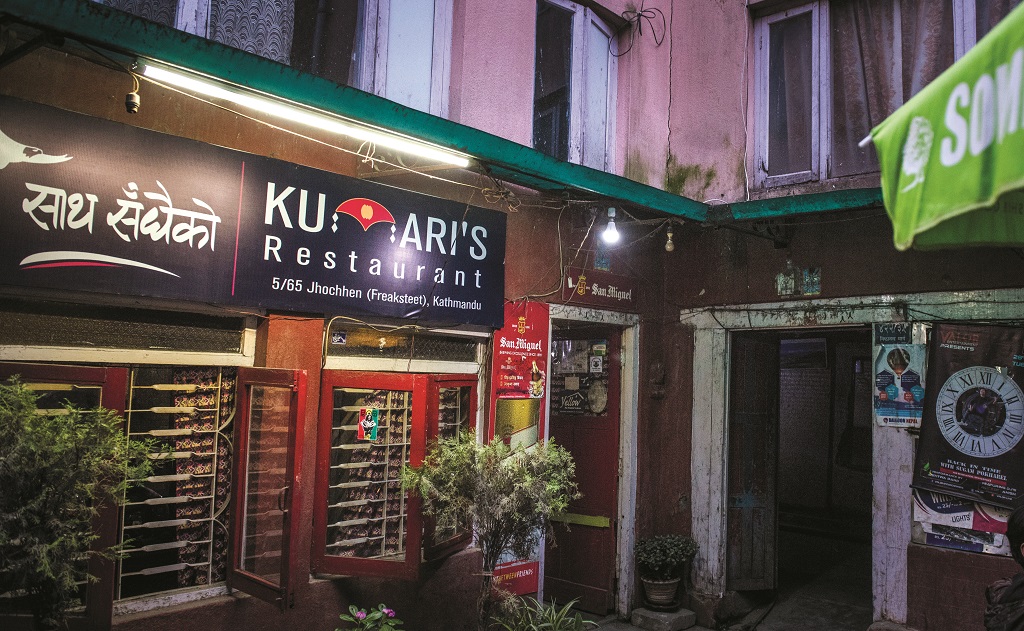 Following the list of these vin-tage eateries located on Freak Street is the Kumari Café. Estab-lished in 1980 by Madan Lal Shres-tha as a family business, the café is a known name to most regular visitors to Basantapur. Yog Prasad Poudel, who has been working as a chef there for more than 13 years, says how “the delay in the reno-vation of the Durbar Square could be beneficial as a disaster tourism strategy but a definite loss for the local restaurants.” He still hopes for the business to get back on track after reconstruction is complete. The famous Greek Mousakka served in both veg and non-veg options is a must try O
Following the list of these vin-tage eateries located on Freak Street is the Kumari Café. Estab-lished in 1980 by Madan Lal Shres-tha as a family business, the café is a known name to most regular visitors to Basantapur. Yog Prasad Poudel, who has been working as a chef there for more than 13 years, says how “the delay in the reno-vation of the Durbar Square could be beneficial as a disaster tourism strategy but a definite loss for the local restaurants.” He still hopes for the business to get back on track after reconstruction is complete. The famous Greek Mousakka served in both veg and non-veg options is a must try O
Children of slain journalists find succor. But for how long?
The decade-long Maoist war, which started in 1996, filled large swathes of the country with terror. Rising inequality and dissatisfaction with the state inspired many Nepali youths to join an insurgency that ended up killing around 17,000 people and maiming and displacing countless others. The war officially ended in 2006 but for many the fight for justice continues.
We’ve read hundreds of articles describing the miserable condition of the Maoist guerillas, the state security personnel, and ordinary citizens alike. But not much has been written about the journalists who were tortured, disappeared or brutally murdered during the war, and even less about their families who continue to live with the wounds that may never heal. Children of the slain journalists not only lost a parent but also an opportunity for a happy childhood.
With the government paying little attention to these children, an unnamed organization under The Asian Journalist Association has been financing their education since the war ended with the help of funds from the Australian Press Association.
We tried to interview some of these children to find out their current situation and their aspirations for the future, but most of them chose to stay mum because of security concerns. Only two were willing to speak on record.
Dev Kumar Acharya and Navraj Sharma were two of the journalists murdered during the war. Their children who, despite having to overcome trauma since a tender age, are still fighting for justice for their families.
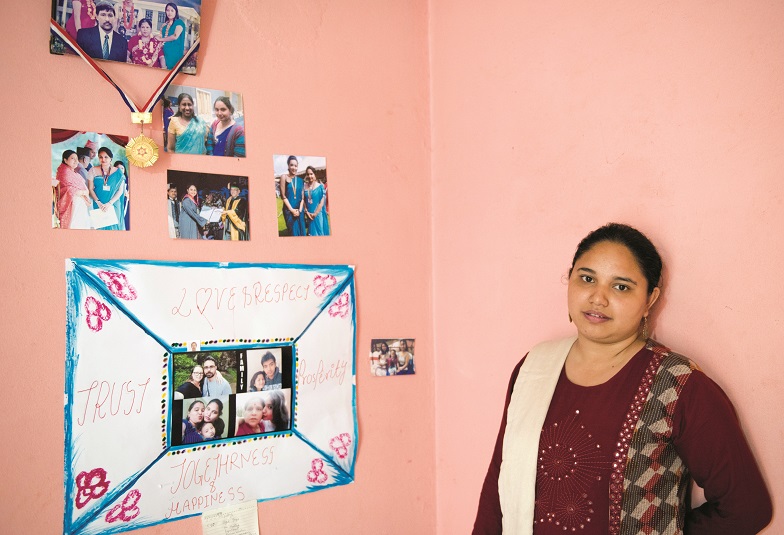
Born in Jhapa, Trishna Acharya is the second daughter of Dev Kumar Acharya, who worked in several newspapers like ‘Janaastha’, ‘Janadisha’, and ‘Swadhin Samwad’. Acharya was abducted on 23 July 2002 on the accusation of being a Maoist and his corpse was delivered to the family the following day. “When we got his dead body, his thumbs were mutilated and it was clear that he was hung upside down and tortured for an entire day,” says Trishna. Then began the struggle for her family as they had to face social ostracism and even rape threats. A small cottage industry of light snacks on which the family depended was also seized. Trishna left the village with a traumatized brother, an agonized mother, and a confused elder sister.
Trishna then came in contact with the organization under the Asian Journalist Association which assisted her financially to pursue her studies. She recently completed her Masters of Arts degree from Tribhuvan University with a gold medal. “My father dreamt of becoming a gold medalist and was working on his Master’s thesis just prior to his murder, so I dedicated my medal to him,” says Trishna.
Her case was filed with the Truth and Reconciliation Commission in September 2014 with the assistance of the organization itself.
“My family members—and even my nephew—still get threats. All I want now is to regain the identity and dignity that my family lost years ago. I want to be the last girl with a tragic story like mine,” says Trishna.
Born in Kalikot, Sangita is the second daughter of Navraj Sharma, who is considered the first journalist killed during the insurgency. He was the editor of a weekly named ‘Kadam’ and also worked at a radio station. Sharma was well liked in the community and his murder came as a complete shock.
“There was a program in my village from where lots of men including my father were abducted. All were released except my father,” says Sangita. What makes the case more disturbing is the fact that the reason behind the abduction and murder of her father is still unknown. After the passing away of her mother a few years later, Sangita came in contact with the organization which then helped her pursue her studies.
She is currently pursuing a Bachelor’s degree in business management and is in her second year. She wants to work in the banking sector, but is also considering a career in the civil service. Her two siblings have been taken under the wings of the SOS Children Village at Sanothimi where they are pursuing their studies.
Sangita’s case has also been registered with the Truth and Reconciliation Commission, but justice has proved elusive so far.
Besides Trishna and Sangita, the organization currently supports 24 other children of conflict victims. But with the funding from the Australian Press Association coming to an end in 2020, the children’s future is far from secure. “Even when the funding stops, we’ve decided to personally contribute to educate these children,” says one of the two chairmen of the organization, who prefers to work quietly and remain anonymous.
But the question of how long these children can depend on an NGO remains unanswered. The state has a responsibility to take care of thes
The decade-long Maoist war, which started in 1996, filled large swathes of the country with terror. Rising inequality and dissatisfaction with the state inspired many Nepali youths to join an insurgency that ended up killing around 17,000 people and maiming and displacing countless others. The war officially ended in 2006 but for many the fight for justice continues.
We’ve read hundreds of articles describing the miserable condition of the Maoist guerillas, the state security personnel, and ordinary citizens alike. But not much has been written about the journalists who were tortured, disappeared or brutally murdered during the war, and even less about their families who continue to live with the wounds that may never heal. Children of the slain journalists not only lost a parent but also an opportunity for a happy childhood.
With the government paying little attention to these children, an unnamed organization under The Asian Journalist Association has been financing their education since the war ended with the help of funds from the Australian Press Association.
We tried to interview some of these children to find out their current situation and their aspirations for the future, but most of them chose to stay mum because of security concerns. Only two were willing to speak on record.
Dev Kumar Acharya and Navraj Sharma were two of the journalists murdered during the war. Their children who, despite having to overcome trauma since a tender age, are still fighting for justice for their families.
Born in Jhapa, Trishna Acharya is the second daughter of Dev Kumar Acharya, who worked in several newspapers like ‘Janaastha’, ‘Janadisha’, and ‘Swadhin Samwad’. Acharya was abducted on 23 July 2002 on the accusation of being a Maoist and his corpse was delivered to the family the following day. “When we got his dead body, his thumbs were mutilated and it was clear that he was hung upside down and tortured for an entire day,” says Trishna. Then began the struggle for her family as they had to face social ostracism and even rape threats. A small cottage industry of light snacks on which the family depended was also seized. Trishna left the village with a traumatized brother, an agonized mother, and a confused elder sister.
Trishna then came in contact with the organization under the Asian Journalist Association which assisted her financially to pursue her studies. She recently completed her Masters of Arts degree from Tribhuvan University with a gold medal. “My father dreamt of becoming a gold medalist and was working on his Master’s thesis just prior to his murder, so I dedicated my medal to him,” says Trishna.
Her case was filed with the Truth and Reconciliation Commission in September 2014 with the assistance of the organization itself.
“My family members—and even my nephew—still get threats. All I want now is to regain the identity and dignity that my family lost years ago. I want to be the last girl with a tragic story like mine,” says Trishna.
Born in Kalikot, Sangita is the second daughter of Navraj Sharma, who is considered the first journalist killed during the insurgency. He was the editor of a weekly named ‘Kadam’ and also worked at a radio station. Sharma was well liked in the community and his murder came as a complete shock.
“There was a program in my village from where lots of men including my father were abducted. All were released except my father,” says Sangita. What makes the case more disturbing is the fact that the reason behind the abduction and murder of her father is still unknown. After the passing away of her mother a few years later, Sangita came in contact with the organization which then helped her pursue her studies.
She is currently pursuing a Bachelor’s degree in business management and is in her second year. She wants to work in the banking sector, but is also considering a career in the civil service. Her two siblings have been taken under the wings of the SOS Children Village at Sanothimi where they are pursuing their studies.
Sangita’s case has also been registered with the Truth and Reconciliation Commission, but justice has proved elusive so far.
Besides Trishna and Sangita, the organization currently supports 24 other children of conflict victims. But with the funding from the Australian Press Association coming to an end in 2020, the children’s future is far from secure. “Even when the funding stops, we’ve decided to personally contribute to educate these children,” says one of the two chairmen of the organization, who prefers to work quietly and remain anonymous.
But the question of how long these children can depend on an NGO remains unanswered. The state has a responsibility to take care of these children who have already suffered so much.












